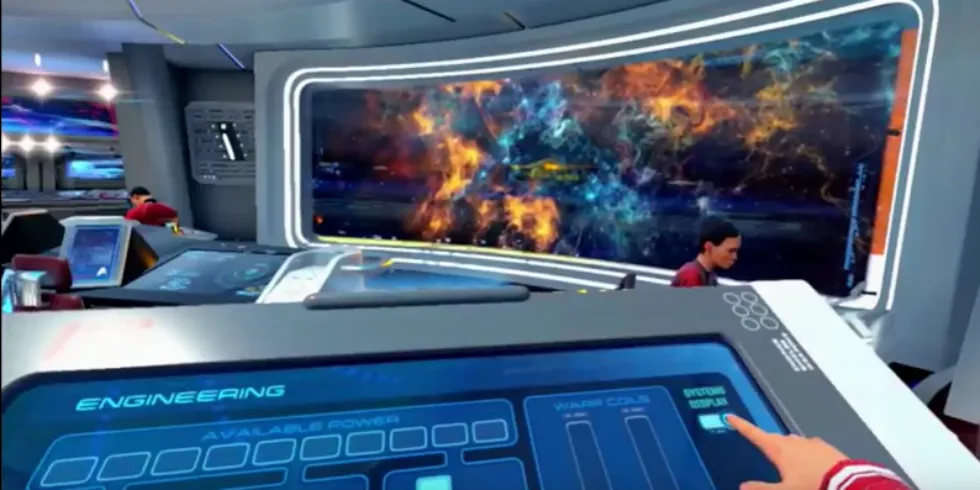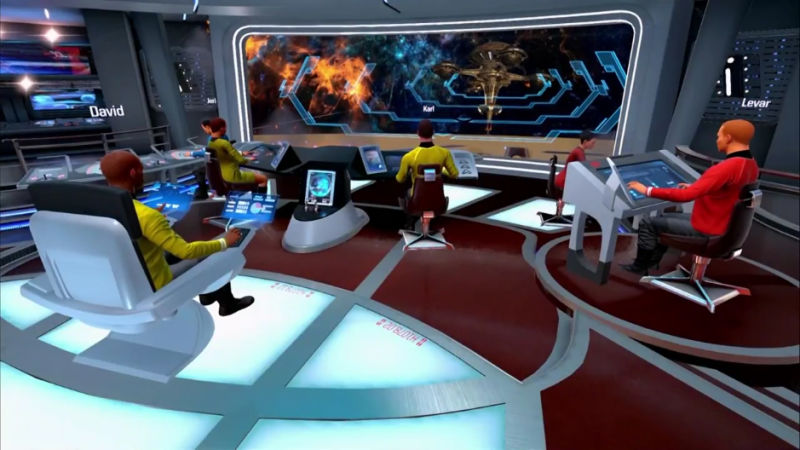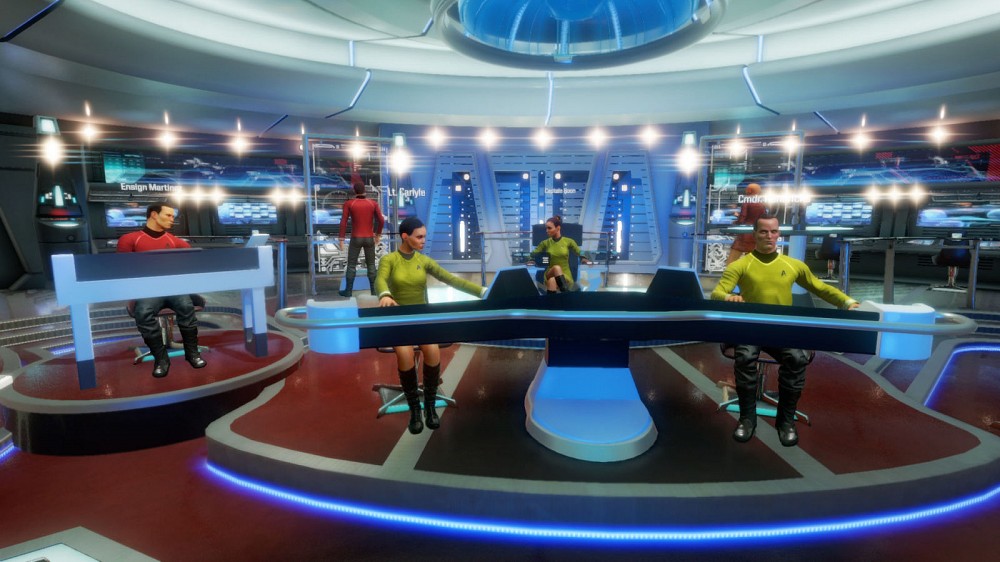When you go to an event like Gamescom, you obviously see a lot of demos. Some will feature tired devs with throats sore from running through a presentation for the 100th time on four hours’ sleep. Some will come off as awkward due to the complexity of a game or difference in language barrier. Some will even go down as disasters thanks to broken code or hardware.
A select few, however, will be special. You’ll be able to feel the buzz as soon as you walk in the booth. Overly excited devs or reps will shake your hand with a welcoming smile. You’ll hear chatter outside the room from people wanting to get in and see it for themselves. You yourself will be eager to sit down and hop right into the game.
Star Trek: Bridge Crew was one of those demos.
The last time we got our hands on this hugely promising co-op project from Ubisoft and Red Storm Entertainment, it walked away with our award for the best multiplayer VR game at E3. In that demo, we played as the helmsman, steering our ship, the U.S.S. Aegis, safely through the galaxy as three other crew members took on different priorities. In the name of variety, I decided to choose a different role for my demo: tactical. That meant handling of the weapons and defensive systems and scanning on board of our vessel.
In the case of this demo, that was actually a fairly relaxed role. My first task was to target some asteroids while helm and engineering prepped to take us to a rescue site. Using Oculus Touch controllers, I raised my hand over a map to bring up 3D depictions of items of interest surrounding the ship. I could then simply tap on them to bring them up for all to see.
This feature was put to better use when we arrived at our destination; a section of deep space in which we needed to locate escape pods and beam any remaining life onto our ship. I set to work tapping on the various pods dotted about my radar, quickly getting anything in sight scanned and prepared for the rest of the crew. It was rewarding to be able to busy myself as the captain barked orders at other roles, although I’ll admit I was getting a little ahead of myself. Our leader would often turn his attention to me to find I’d already done what he was about to ask.
I’m sure if I were really a member of Star Fleet, my eagerness would have been met with a strict telling off. Within the context of the demo, though, my insubordination went without comment, and so I proceeded to carry out my objectives before I’d been told to actually do so, feeling like something of a rogue as I happily fiddled with the various buttons and sliders sitting in front of me.
Up until now I hadn’t had much use for my actual weapons, but that changed the instant a Klingon ship showed up. The captain’s orders were loud and clear this time; hit it with everything we had. And so I did.
So much of Bridge Crew‘s wish fulfillment comes from not what you’re doing, but how you’re doing it. The Aegis’ offensive capabilities consisted of rapid-fire phaser beams and homing torpedoes, a Star Trek favorite. I sat repeatedly hitting fire on phasers as I desperately waited for our torpedo meter to fill, sending a pair hurtling out into space every time it did. When it came to defense, I’d slide a shield meter up to turn them on. These could be simple interactions on a gamepad, but the key to this experience is making each one its own action with a big, exaggerated button or slider.
Ubisoft really wants you to feel like you’re sitting at that terminal and that’s what Touch (or the Vive wands and PlayStation Move for their respective headsets) enable you to do. Star Trek would be fun with just a normal controller, but it’s the ability to wave your hands around like a sci-fi wizard that really makes the experience.
My concern about the tactical role is if it might tire over time, though. Bridge Crew is just a few months out, so it’s probably too late to add any radical new features, but I’d welcome the chance to make combat a little direct. All my attacks were locked on, so I had to simply press a button to fire without any aiming. Given the chance, I would have hopped straight into some sort of turret control system to add a little FPS action to the mix. Either that or I could have done with some sort of juggling act between offensive and defensive power, though maybe this will be in the final game.
I also wasn’t crazy about the desk in front of me. It was a physical surface, and if I moved my real hands through it with Touch, my virtual ones wouldn’t follow me. Instead they’d slide down towards the bottom of the table, creating a very obvious disconnect. This feels like a missed opportunity; Bridge Crew is set on a new type of ship that should give Red Storm a little creative freedom. I would have much preferred these terminals to be holographs that I could put my hands through, thus maintaining the immersion. Still, I understand and admire the adherence to authenticity even as only a very casual fan of the franchise.
These issues aside, my time with Star Trek lived up to the lofty expectations that our own David Jagneaux had put upon it back at E3, at least in the context of a singular demo. The real question is how this translates to a full game; what reasons will we have to keep on heading back to the bridge after we’ve tried all the roles for ourselves? What kind of depth will we discover when we’re let loose in the universe for the first time? And how will games play out when we’re finally able to get other people into the role of captain other than those that actually worked on the game?
We’ll have to answer those questions in another Captain’s Log.



























